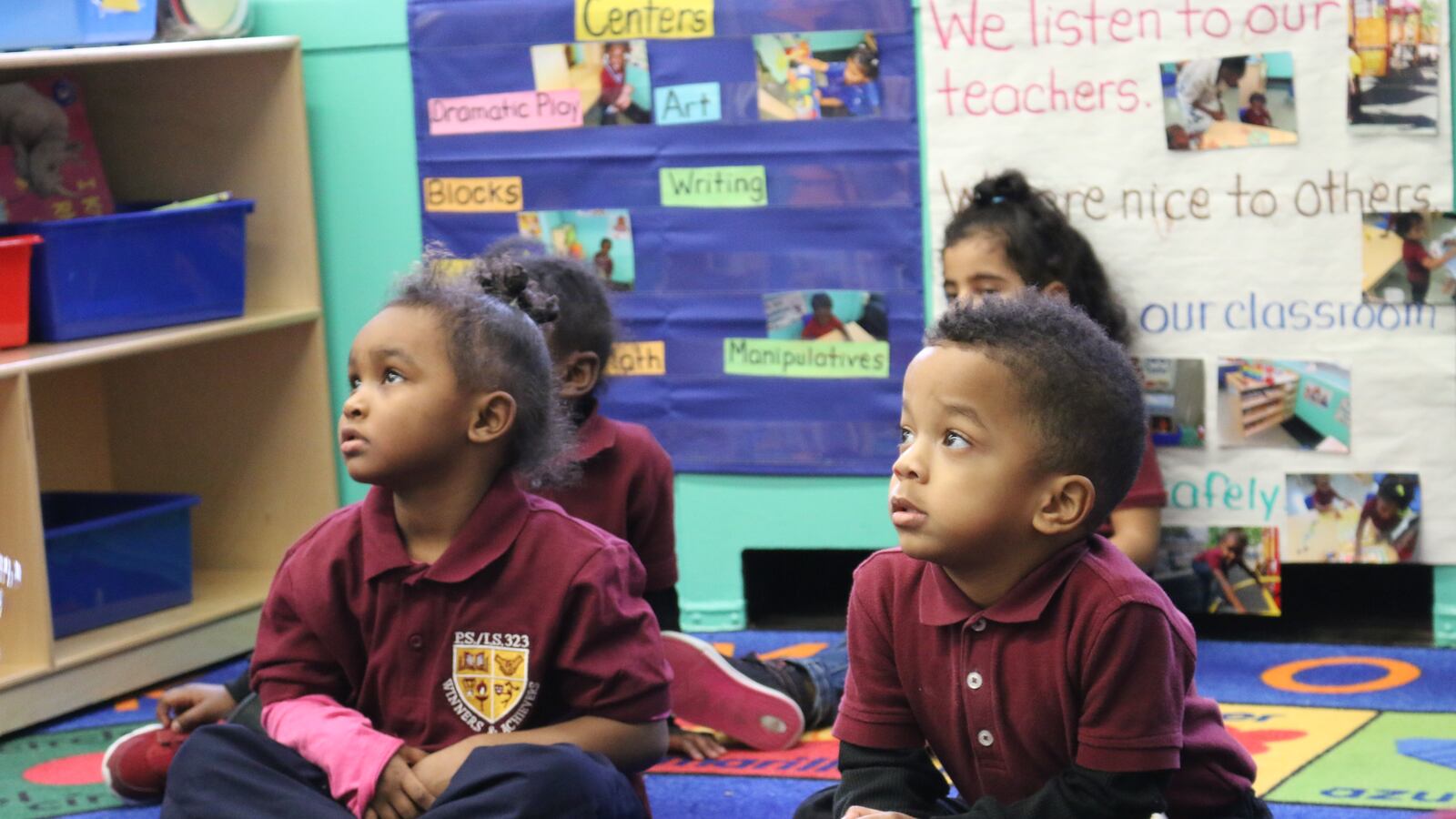A few years after South Carolina expanded access to preschool programs, students’ test scores in elementary school jumped.
But the increase contained something of a mystery. Only students from low-income families were eligible for the new pre-kindergarten program. Scores, though, climbed across the board, including for students from more affluent families.
New research documenting that phenomenon comes to a conclusion that could help those pushing for more public support for early childhood education. The students who attended preschool were disciplined less often and had higher test scores when they reached elementary school, improving the school environment for all and pushing everyone’s scores up.
“Having students come into the classroom better prepared, that in and of itself is going to help all students,” said researcher Breyon Williams of the University of South Carolina. “The behavior’s improving, the classrooms are more conducive to a proper learning environment — and that might be yet another reason why the students who are not participating in the program still can benefit.”
The study underscores the effect that individual students can have on entire classrooms and schools, and the potential benefits of programs that prepare kids for elementary school.
Still, the findings should be interpreted cautiously, and they may not apply to places very different from South Carolina. A 2018 national study found public preschool programs didn’t lead to higher fourth-grade test scores, though it did find gains for students in majority black districts, like most of those in the South Carolina study.
“The one thing we know from the bigger body of evidence is … your mileage may vary,” said Steven Barnett, the founder of the National Institute for Early Education Research and a professor at Rutgers University. “It really does depend on the program and its context.”
Pre-K boosts test scores in South Carolina, but not in national study
The South Carolina study looks at the a preschool program the state created in 2006 in response to a state Supreme Court decision. The program funded free full-day pre-K for low-income 4-year-olds in 36 districts across the state.
By comparing trends in test scores in those districts to the scores of similar students elsewhere in the state, Williams found that the preschool expansion had clear benefits for students in grades through three through five in both math and reading. Gains were largest for low-income students who were able to attend newly created pre-K, but the gains were substantial for other students, too.
Williams was surprised. He even called the state department of education to confirm that only low-income students were allowed to participate in the program (though other students may have attended other forms or preschool).
“You don’t really see a lot of conversations surrounding whether or not students that are actually not participating in these programs gain still,” Williams said.
Preschool also seemed to cause a 30 percent decline in disciplinary incidents for low-income students. This might have meant a better learning environment for all kids.
When it comes to serious behavior problems in kindergarten, Barnett said, “The big problem is when it interferes with the learning of every other kid in the classroom. If you can can cut that from three or four kids to one or none, that’s a huge difference.”
A caveat of the South Carolina research is that it’s possible that the gains came from other changes in addition to pre-K. Still, a 2013 study in North Carolina also showed that peers benefitted from other students attending pre-K.
National research from last year offers a less optimistic take on whether the benefits of pre-K truly spill over. That study, which was designed to capture the effects pre-K might have on both students who participated and students those didn’t, finds that publicly run pre-K programs didn’t seem to boost fourth-grade test scores. If anything, they caused small declines in reading scores.
But the national study does show gains for students in certain places.
“Pre-K programs do appear to have substantively large benefits when they are either higher quality or operated in more disadvantaged school districts, such as majority-black school districts,” the national researchers write.
Since the majority of students in the South Carolina districts were black, the national study may indicate that pre-K is likely to have spillover effects in those districts.
Preschool effects often fade away, but that might not matter much
The South Carolina study, and the national one, both look at the effects of pre-kindergarten several years later, in later elementary school grades. That means they help address another key questions about early education: whether the effects of pre-K fade away over time, and why.
A number of studies, including ones looking at federally funded Head Start and a Tennessee preschool program, have found that students who attended pre-K saw initial gains disappear by early elementary school. The newest national study finds little benefit, in terms of test scores, in grade four.
Elsewhere, including North Carolina and Tulsa, Oklahoma, benefits have persisted. That’s what the South Carolina study suggests, too.
Some research has shown that early childhood benefits are larger when students attend better-funded K-12 school, suggesting the quality of later schooling is key.
All that said, it’s not entirely clear how much the fade-out actually matters. Older studies have found that Head Start students had higher incomes when they reached adulthood, even though the effects didn’t show up in test scores.
“Even if the average pre-K program produces no measurable impact on 4th grade test scores,” the national researchers write, “whether due to varied quality, test score fade-out, or both, it does not necessarily follow that there are no long-term or ‘sleeper’ effects.”


